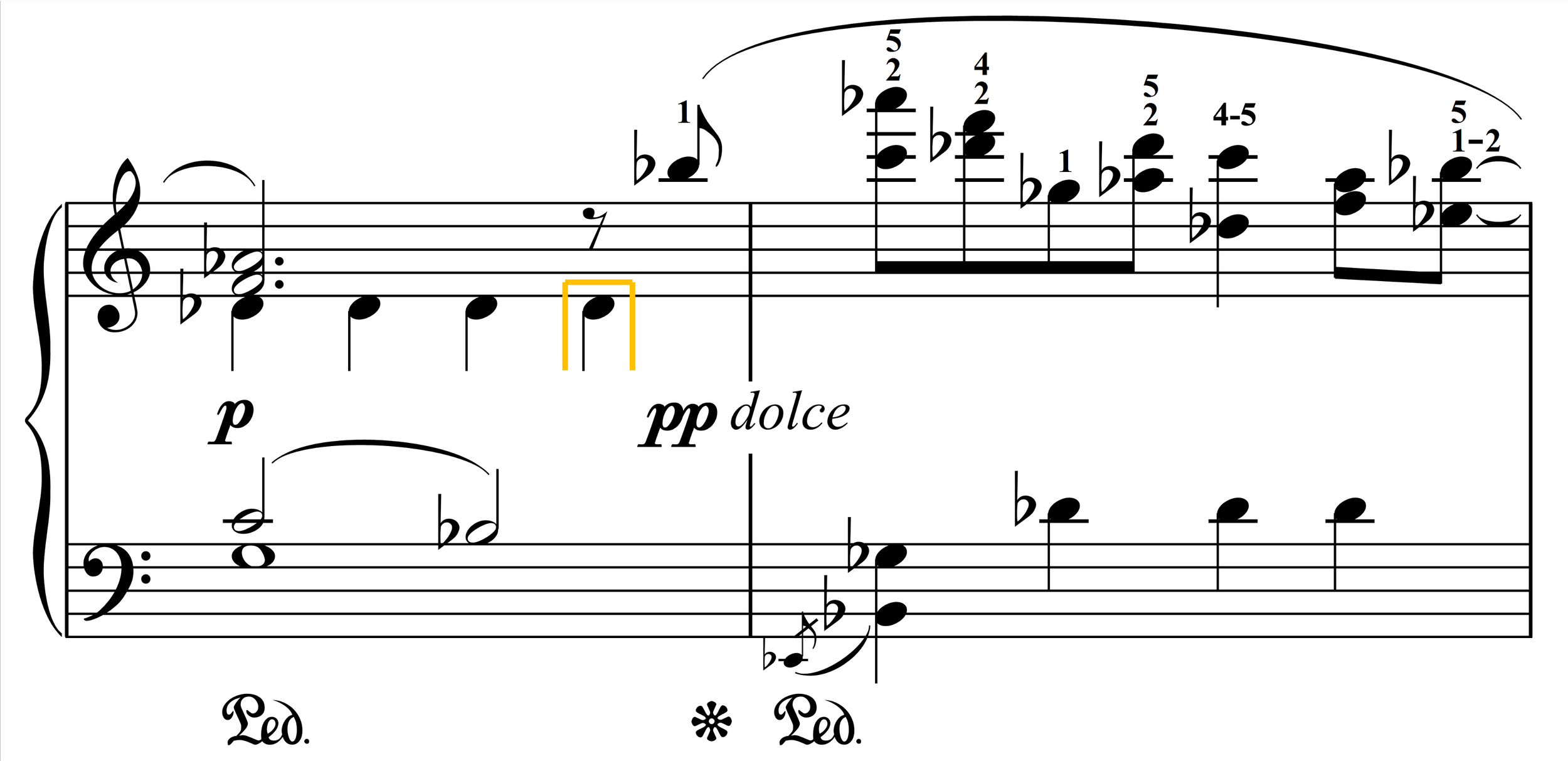“I find that I can play the third at maximum volume more securely with two hands.”
Submitted by Michael Clark
Published on 1/1/2020

“I find that I can play the third at maximum volume more securely with two hands.”
Submitted by Michael Clark
Published on 1/1/2020

“No need to leap when the D-flat is easily within the right hand’s reach.”
Submitted by Michael Clark
Published on 1/1/2020

“Taking the F in the right hand allows the left-hand arpeggio to follow the same fingering pattern as the pervious one and gives more control of the timing.”
Submitted by Michael Clark
Published on 1/1/2020

“The last two note of the arpeggio are within the right hand’s current position.”
Submitted by Michael Clark
Published on 1/1/2020

“The A-flat in m. 217 is struck by the right hand, then silently transferred to the left-hand thumb so that right can start the new line. The last A-flat in m. 219 is in the right hand’s current position, and this line continues to the right hand in the following measure anyway.”
Submitted by Michael Clark
Published on 1/1/2020

“The C in m. 36 should be struck by the right hand and then silently transferred to the left hand, allowing seamless legato in all parts.”
Submitted by Michael Clark
Published on 1/1/2020

“The right hand doesn’t need to stretch to reach this chord or roll it when the bottom note is within easy reach of the left hand.”
Submitted by Michael Clark
Published on 3/17/20

“The right hand doesn’t need to stretch to reach this chord or roll it when the bottom note is within easy reach of the left hand.”
Submitted by Michael Clark
Published on 3/17/20

“Transferring the D-flat to the left hand relieves the right hand from hurrying up to its next position, allowing greater control of the pianissimo dolce sound.”
Submitted by Michael Clark
Published on 8/22/2022

“Taking these notes in the right hand helps me maintain legato in the melody while changing the pedal for the new C-sharp bass note.”
Submitted by Michael Clark
Published on 8/22/2022

“I like the feel of dividing these notes more evenly between the hands.”
Submitted by Michael Clark
Published on 8/22/2022

“Isolating the F in the right hand reduces the distance of the position shift and facilitates bright voicing.”
Submitted by Michael Clark
Published on 8/22/2022

“This fingering helps me deliver bright accents and improves my accuracy in the right hand.”
Submitted by Michael Clark
Published on 8/22/2022

“Redistributing the bottom of the right-hand chord shortens the distance the right hand must travel and enhances my accuracy.”
Submitted by Michael Clark
Published on 8/22/2022

“Taking the G in the left hand allows the right hand extra time to move to its new position.”
Submitted by Michael Clark
Published on 8/22/2022

“Taking the G in the left hand creates a more compact position in the right hand while hardly expanding its own span. The smaller interval in the right hand allows me to use both 4 and 5 and align my arm for maximum power on the accent melody note.”
Submitted by Michael Clark
Published on 3/8/2023

“I divide the septuplet between the hands in this way, finishing with the right-hand thumb to more reliably project the strong accent.”
Submitted by Michael Clark
Published on 3/8/2023

“Interchanging the middle voice between the hands in this way helps maintain legato in all voices with the minimal pedal that Danielpour requests.”
Submitted by Michael Clark
Published on 3/8/2023